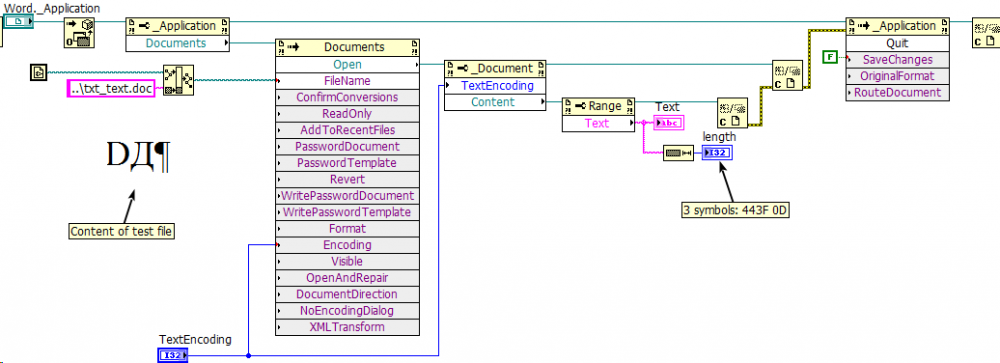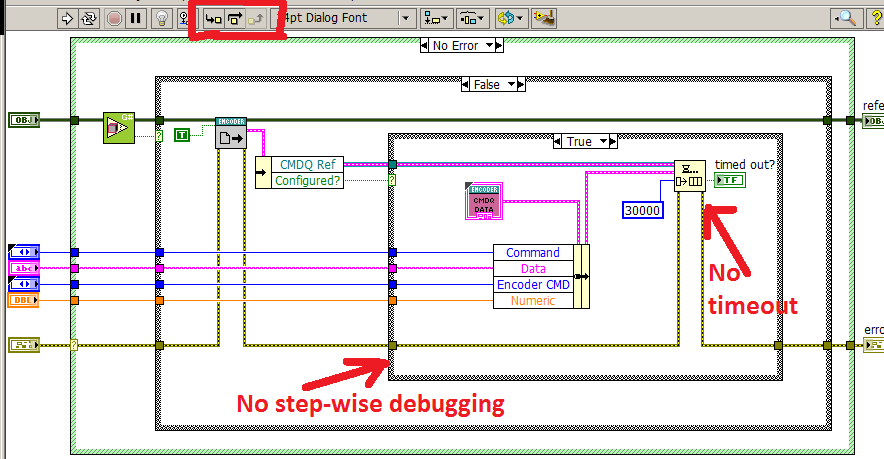-
Posts
43 -
Joined
-
Last visited
Profile Information
-
Gender
Not Telling
LabVIEW Information
-
Version
LabVIEW 2013
-
Since
1995
Recent Profile Visitors
2,527 profile views
_Y_'s Achievements
-
Thank you for the answers. I cannot say which would work for me because investigation could take quite a time. However, I shall not forget about this discussion.
-
We use USB-connected Microsoft Smart Card Reader. The devise crashes sometimes. It does not happen often thus search for the reason could take time. The only way to get the devise functioning again, is to open Device Manager, click Uninstall then Scan for hardware changes (that installs the Reader again). Is there any method to do this from LabVIEW? I.e. send commands to reinstall the USB device? I know this could be a bad fix. However, it can help in long-time tests (while we are searching for reason of these crushes). Thank you
-
Thank you, ShaunR, for your attempts. This is my test code. I can read the file but the output string contains no hidden data, only U8 symbols. So, I get question mark instead of the national character. txt_text.doc word_reader_160913.vi
-
Is it possible to send such a command from LabVIEW to MS Word? Is there any description how to do it? Actually it could be a good solution.
-
ShaunR, thank you for the answer. The information about Unicode in LabVIEW is really interesting and will be useful. However, I am still at the square 1. The article does not explain how to get Unicode string from MS Word document (or I did not find answer in the article).
-
I need to "extract" text from MS Word document (no formatting, just plain text). Unfortunately, methods that I found allow to get only conventional LabVIEW string where all national characters and symbols are lost. Each such a character is replaced with code of question mark. Is there any way to read national text from MS Word? I would be happy to get it in any format; for example as U16 array of Unicode symbols, or U8 array with two values per symbol, or any other. I would also be happy with any Word format: doc or docx. Thank you
-
I am trying to implement a simple DAQ Watchdog with single digital output but cannot find any logical way to reset the Watchdog timeout signal. One of obvious solutions is invoking DAQmx Reset Device.vi. Unfortunately, it does not work. The Watchdog goes to timeout state but the physical output signal does not turn to High. For some obscure reason (typical non-qualified guess:) I added bottom part of the code that is red-framed in the BD. The only difference between functional and non-functional code is using DAQmx Start Task.vi, that is located in “Solutionâ€-driven case structure. If Boolean control “Solution†is True, the code works; if False, it doesn’t. Please help to understand why launching conventional Digital Output task is necessary for normal functioning of the Watchdog? PS: Attempts to use clear expiration command instead of DAQmx Reset Device.vi were not successful. PSS: HW is PXIe-6358 PSSS: Unfortunately, I cannot post any image here. Any image format results in "You are not allowed to use that image extension on this community" . The VI is attached. watchdogTest150817.vi
-
Unforttunalely, it does not work if a new element is iserted near an old element and both have default value. The simplest example is inserting in Boolean array where all elements are False. The method will say that the element is added at the end independently on the actual insertion position.
-
UI has an array. A new element can be added initialising one more element at the end or using menu "Insert element before". Both methods launch user event "Value Change". Is any way to see index of newly added element? My guesses are limited to watching position of mouse clicks but there is no fun is such a solution.
-
Yes, it seems so. But what is the use for this terminal? Enabling to work with VIs belonging to the caller program without name conflict?
-
C:\Program Files (x86)\National Instruments\LabVIEW 2013\project\procmphier.llb\CMP Compare two VIs.vi Thank you very much, it is the solution! By the way, I have no idea what for terminal "application reference" is used. My problem is solved without any need in this derminal but I probably miss some pearl?
-
Hi all, I need to compare two VI-s dynamically, i.e. by my LabVIEW program. Unfortunately, the single solution found does not differ much from conventional VI-comparing tool supplied with Professional version of LabVIEW. This is what I found: LVCompare.exe allows launching comparison of two VI-s but it exposes results in conventional UI. However, I need an output that can be processed automatically: string, array of strings or something else. NI_procmphier.lvlib:CMP compare two VIs.vi seems to be designed for such needs. However, I cannot get it working. It has no description and its BD is password-protected. All terminals are recommended, so the number of combinations is infinite. Can some of you advice a method for dynamic comparison of VI-s? May be some of you know how to use CMP compare two VIs.vi? Thank you!
-
Hi, I develop a new TestStand solution with use of IMAQ/Vision. The structure is conventional: UI is written in LabVIEW as well as particular tests. In some cases images and test-specific controls/indicators must be shown to user(s). This works well with conventional "Show front panel when called" set to test VI-s. However, such FP pop-up solution is not the best. Is it possible to insert test VI-s in SubPanel of UI? If so, I shall appreciate any hint how VI reference is obtained and sent from TestStand sequence to UI. Thank you
-

Strange queue/debugging behavior probably related to race conditions
_Y_ replied to _Y_'s topic in LabVIEW General
Yes, it does not exit after 30s or even after lunch. -
Hi all, I got a strange queue behavior that is probably related to race conditions. The problem is eliminated (a way around is found), so there is no need in a quick solution. However, I would be happy to understand reasons for such a phenomenon. BD of the “problematic†VI is attached. The queue size is limited to 1. The program consists of multiple asynchronous processes. Execution reaches the Enqueue Element node than stops. The timeout never happens; the program hangs. However, there is more. If I try to execute the VI step-wise, everything works fine until the execution enters the internal Case Structure. When it enters, three Stepping buttons become disabled. If I try to decompose the program, i.e. to use the same VI in a simple single-process program, both problems disappear. Have you encountered such a strange behavior? Any ideas that can help to the poor creature (me) to avoid sleepless nights?




